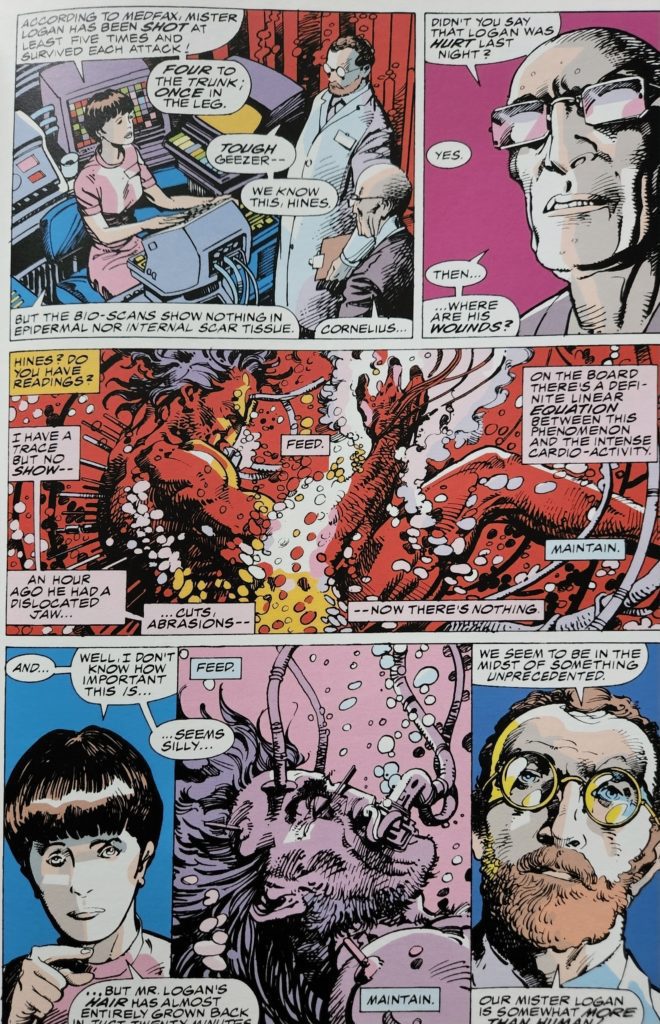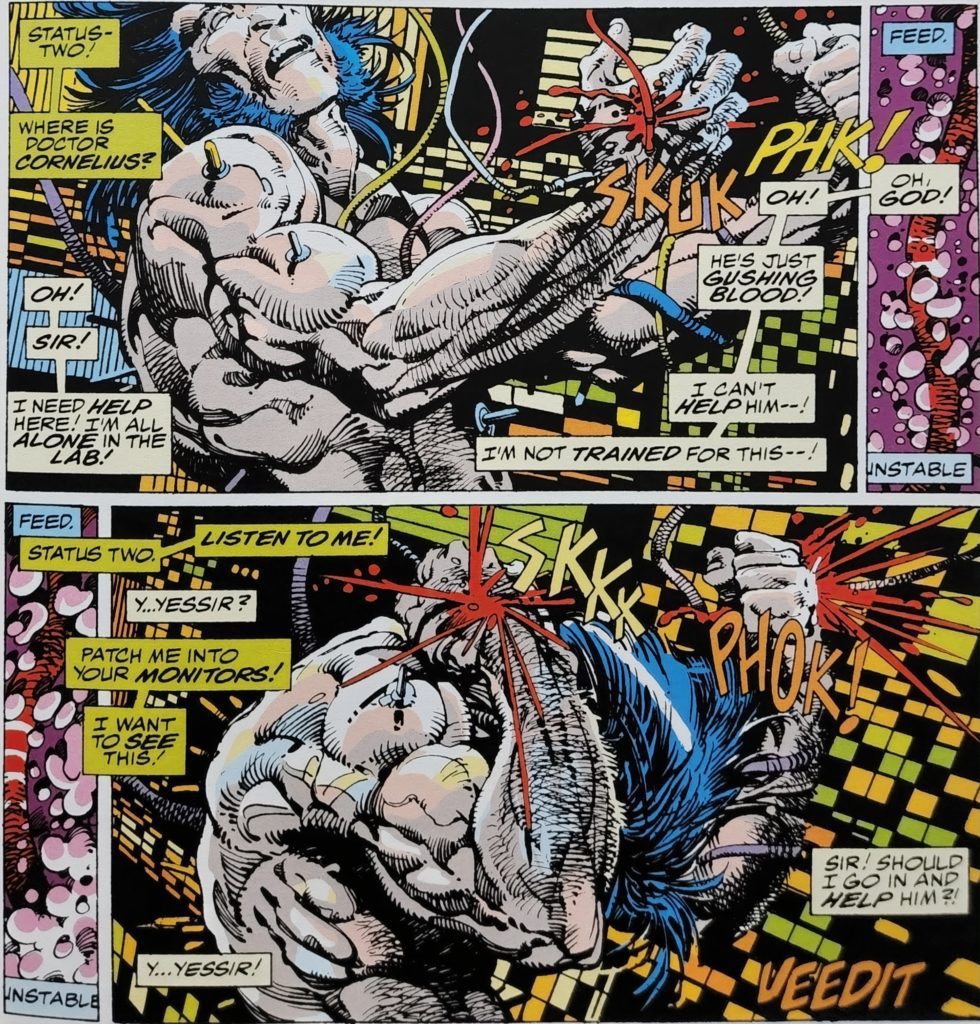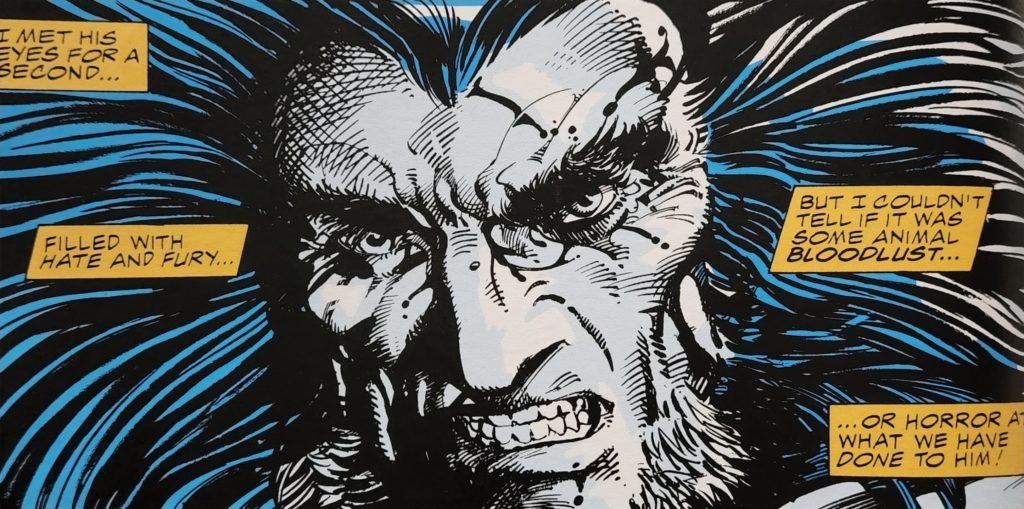By the early 1990’s, mainstream comics had transformed into something almost unrecognizable to their precursors. Gone was the adventurous optimism of the Silver Age and the PSA-style messaging of the Bronze Age. For better or worse, the Modern Age was well underway, beckoned forth by creators from across the pond and loaded with sinister tales. For the most part, this new era affected most mainstream superhero comics in purely stylistic manners. Writing and visual styles were altered and subject matters grew more serious but the big heroes scarcely strayed from their classic characteristics.
However, there were exceptions.

In March of 1991, renowned comics creator Barry Windsor-Smith began work on a Wolverine story in Marvel Comics Presents #72. This story would go on to explore the harrowing origin of one of Marvel’s most popular and iconic characters: Wolverine. This story, which would run through Marvel Comics Presents #84 in September of the same year, would be a game changer for what could be done with major superheroes. For better or worse, BWS had set a new standard for character origins for the following decade – if not far more. A brutal exercise in body horror and human experimentation, with themes of isolation and primal nature, Weapon X is one of the most memorable and influential stories in mainstream comics, crafted by one of the medium’s greatest creators.
Smith takes the core of his plot for Weapon X from the core elements of Logan’s character that were already established. Readers already knew the “Ol’ Canucklehead” as a loner with a mysterious, yet doubtless tragic, backstory. There are only glimpses and half-truths of where he came from and what his experiences were before joining the X-Men (this was still a decade before Jenkins and Kubert’s Wolverine: Origins series). There was always an inherent sadness and pain that surrounded Wolverine’s persona. BWS took these elements and crafted a shocking and deeply unsettling horror story.
At the very beginning of the series Smith presents Logan in the kind of environment we expect to find him. His existence is spent bouncing between bars and halfway houses for the lost and destitute. His internal monologue is made up of unclear ramblings, loaded with both reflections and foreshadowing. He’s running from something terrible, while understanding that something even worse is ahead. Wolverine’s aimlessness just adds to the sadness we already have for this character, while his understanding of what’s to come adds to the tension. Then of course he gets captured by Canadian G-Men and the horror truly begins.

The brilliant technical narrative move here that Barry Windsor-Smith makes is swapping the point-of-view from Wolverine to the scientists that are experimenting on him. Witnessing the plot unfold from their perspective accomplishes two key elements that make this story so memorable. The first is unlocking the analytical and sterile manner in which much of this story is told in. There have been many comparisons made to Shelley’s Frankenstein when talking about Weapon X. While much of that does come this comic’s creation of its own monster, another reason for that analogy is because of the almost journalistic approach Smith writes the scientists’ perspectives from. Granted it doesn’t stay this way through the whole story. There are numerous character-focused conversational sequences among the three main scientist characters as questions about the moral and ethical area they have stepped into become more and more grim. This element allows for some sense of empathy for at least two of these characters, Cornelius and Hines, as the realizations of what they’re doing start to visibly hit them (far too little, far too late). This characterization actually leads into the second story element I mentioned earlier – the horror story this comic actually is.
Smith’s framing of the majority of the plot in Weapon X sees Wolverine steadily become something otherworldly and unpredictable. He goes from being this familiar superhero as Len Wein originally intended to something that leans into the animalistic tendencies instilled into him in the years since. Smith crafts increasingly disturbing and dehumanizing images of Wolverine in the labs and test scenarios. Moments where his bone and flesh are being grafted with the adamantium and then he’s threaded full of wires and cable are reminiscent of a scene in a Clive Barker story, not a Marvel comic book.

Smith’s artistic mastery of anatomy allows him to craft visceral images of the bloody horror going on throughout the story. Whether it’s the nightmare sequences played out in Logan’s mind as he is experimented on or the gory aftermath of his successful procedure, there’s a rawness to the incredibly detailed art that makes many of the panels in Weapon X stay with the reader long after the book is closed. This sort of hyperdetailed anatomical correctness is what brought Smith to popularity in the 1970’s with his work on Conan The Barbarian, and would continue in even more disturbing fashion with his 2021 graphic novel Monsters.
BWS is an icon of the comics medium for many reasons, with the sort of detail and animation mentioned earlier being second only to the late legend Neal Adams. However, Weapon X is a shining example of how Smith utilizes his art and composition for his own storytelling ends. His hyper-detailed panels vary wildly in their design, ranging from large splashes to multiple jagged frames all crashing into one another. As such, his direction may be considered by some to be ‘hard to follow.” This isn’t necessarily the case, as his approach really just asks more of the reader than most mainstream comics tend to. His lettering approach is a prime example of this. Instead of a linear “left to right” or obvious word bubble tail leading to a speaker, his boxes often form a low horseshoe under or around the main image. Thematically, this maintains a sort of mystique in the comic as the reader is trying to figure out who is saying what. Technically though, keeping the lettering out of the way near the panel borders is a smart way to keep the whole image intact. Smith’s storytelling is directed entirely by his art. If the narration boxes and word balloons were eliminated, figuring out what was happening throughout the story would still be relatively easy.
Barry Windsor Smith’s Weapon X is the ultimate subversion of the Marvel hero origin story. Much like the rest of the X-Men, the iconic adage of power & responsibility is tossed aside and replaced by the mutants’ troubled existence. Smith just takes this one step further by doubling down on Wolverine’s pained, mysterious past and more primal tendencies, and then combining them with his own artistic sensibilities. The result is a brutal, incisive, and brilliantly crafted story that still stands as one of the greatest origin stories in all of comics. With elements of body horror, science fiction, and a political thriller, Barry Windsor Smith further solidified his status as one of the medium’s absolute greats by giving readers one of the most thoughtfully crafted comics in Marvel’s publishing history.

